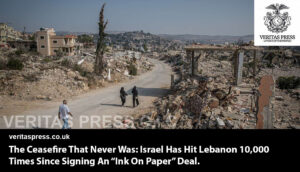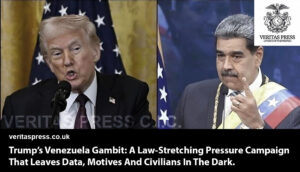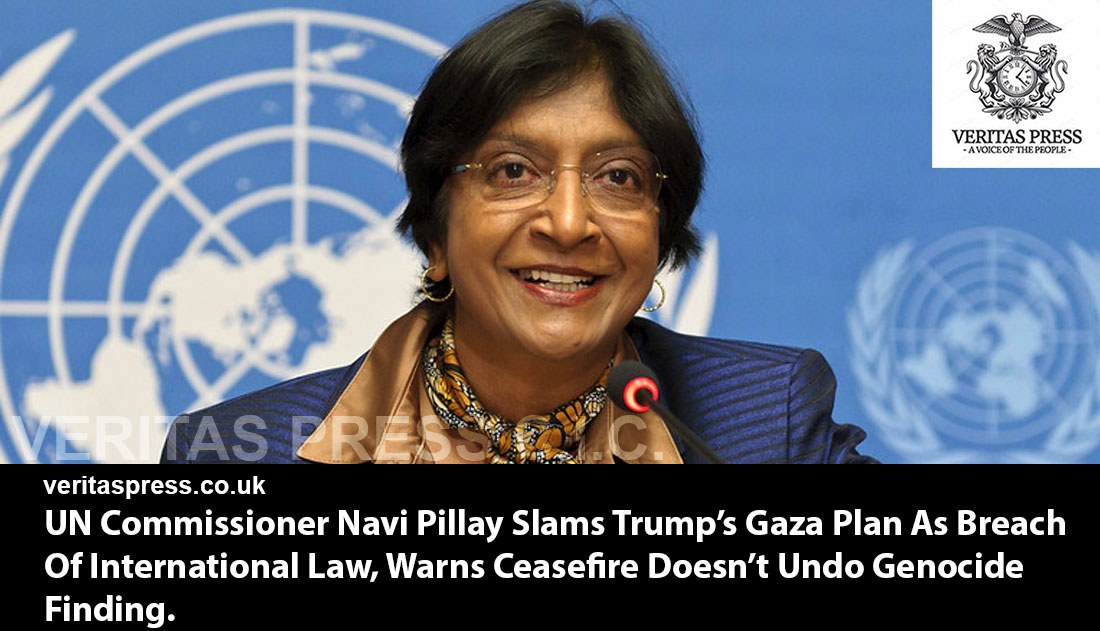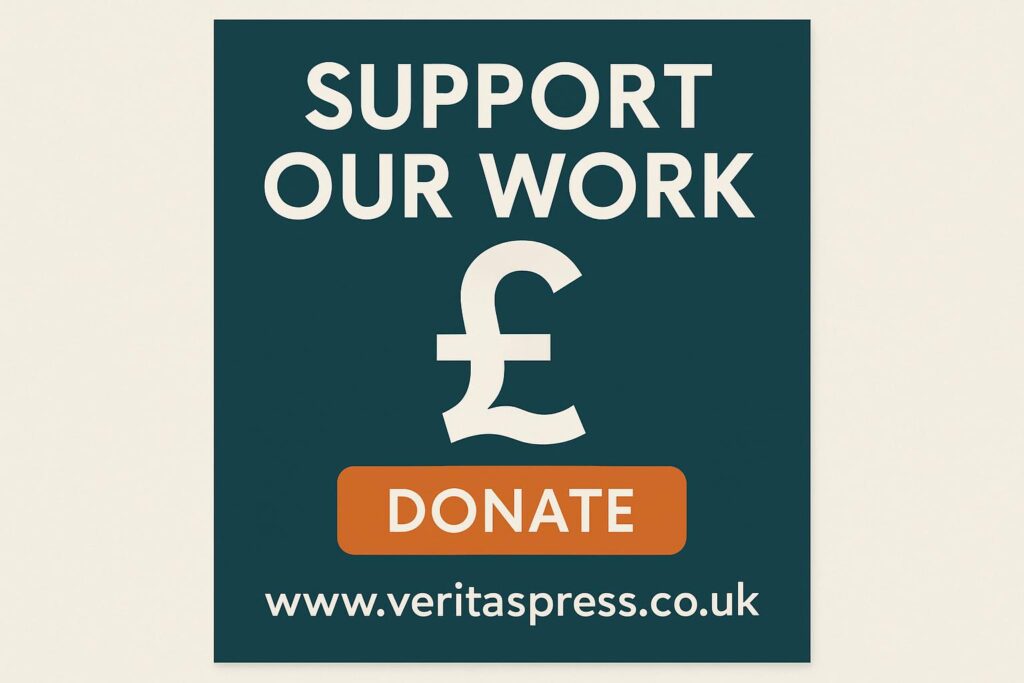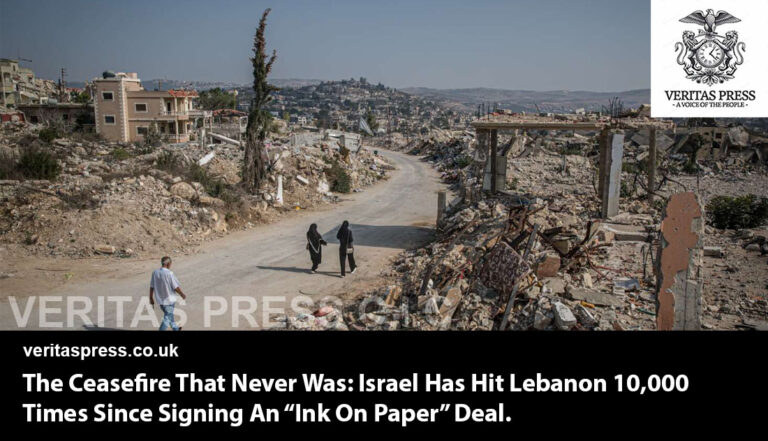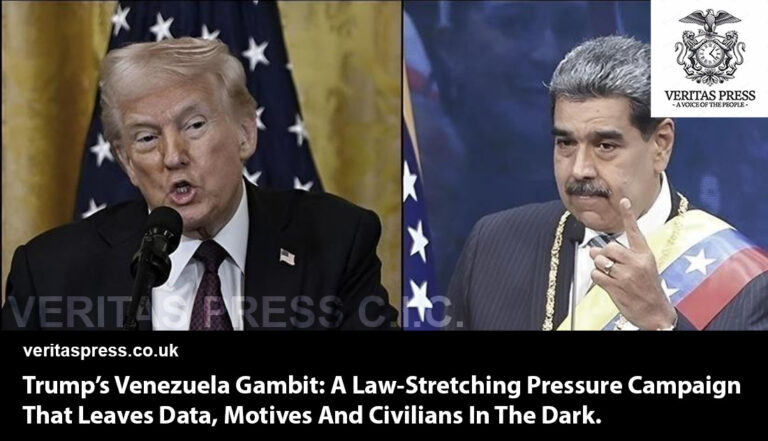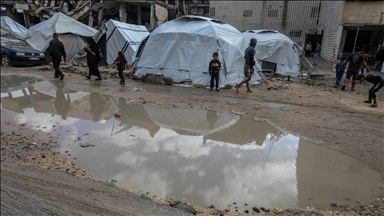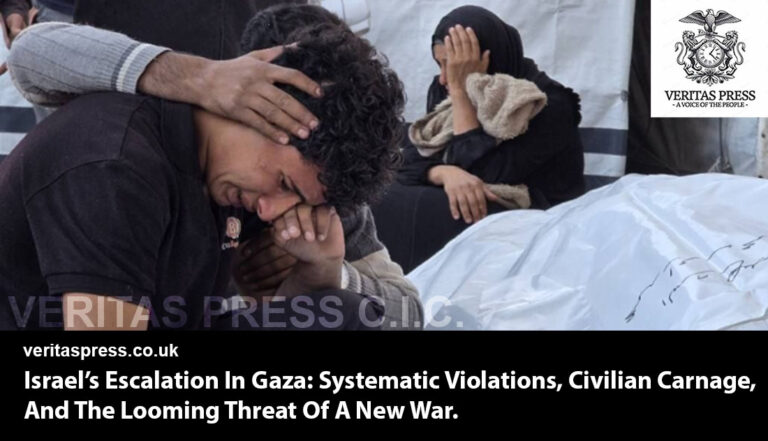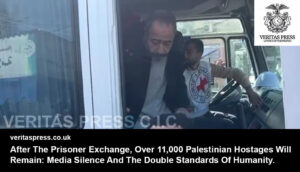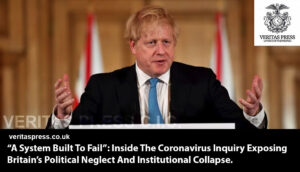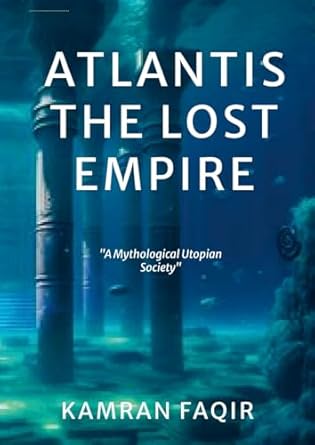In a powerful critique of the U.S.-brokered “peace” proposal, UN Commissioner Navi Pillay has warned that the plan outlined by the US President Donald Trump flagrantly violates international law and undermines Palestinians’ right to self-governance. Even as a ceasefire deal between Israel and Hamas moves forward, Pillay insisted the United Nations’ determination that Israel is committing genocide in Gaza remains binding and intact.
Pillay: A Ceasefire Cannot Nullify The Genocide Finding.
In a solemn interview with Middle East Eye and the Expert Witness podcast, Pillay rejected interpretations that the recent ceasefire deal might reverse or freeze the UN inquiry’s findings. “The conclusion of the commission still stands,” she affirmed. “Israel has committed genocide and is continuing to do so. Just because there’s a call for a ceasefire now does not mean that the finding of genocide is going to go away.”
Pillay chairs the UN Independent International Commission of Inquiry on the Occupied Palestinian Territory, which published a landmark report in September 2025 concluding that Israel had committed four of the five acts proscribed under the 1948 Genocide Convention, and that key Israeli leaders demonstrated genocidal intent.
For Pillay, then, humanitarian pauses or diplomatic deals cannot erase a legal judgment grounded in fact, law and methodology. In her words:
“Just because there’s a call for a ceasefire now, it doesn’t mean that the finding of genocide is going to go away.”
Trump’s 20-Point Gaza Plan: Excluding Palestinians And Entrenching Occupation.
Last week, Trump unveiled a controversial 20-21-point plan for Gaza, presented jointly with Israeli Prime Minister Benjamin Netanyahu. Though cast as a “peace” initiative, the proposal elevates Israel’s frame of security over Palestinian agency, and notably excludes Palestinians from genuine governance during the “transitional” phase. Under the plan, Trump, alongside former British PM Tony Blair, would take a leadership role on a transitional supervisory committee.
Pillay was blunt in her criticism: such a structure is incompatible with international law, as well as with precedent set by the International Court of Justice (ICJ). She pointed specifically to the ICJ’s 19 July 2024 advisory opinion, which held that Israel’s occupation of Gaza and the West Bank is unlawful and must be ended unconditionally.
She observed:
“This plan goes directly against the declaration of the International Court of Justice.”
One of Pillay’s central objections is that Palestinians are denied a controlling role in the transitional phase. “They not only should be part, they should be the controlling feature because they are able to govern themselves,” she insisted.
Moreover, the plan allows Israel to maintain strong security control over Gaza, which Pillay warns would severely restrict any real sovereignty or independence for the Palestinian people:
“The plan allows Israel to maintain significant security control over Gaza, and this would restrict Gaza’s independence and ultimately the sovereignty of the Palestinian people.”
Legal And Diplomatic Foundations Behind Pillay’s Position:
Pillay’s critique is anchored in multiple international legal and diplomatic pillars:
- The UN Commission of Inquiry’s September 2025 report — the most authoritative UN-level determination thus far, which found Israel is committing acts of genocide in Gaza.
- The ICJ’s advisory opinion (July 2024) declared Israel’s occupation of Gaza and the West Bank unlawful.
- A UN General Assembly resolution of 18 September 2024 that requested Israel to comply with the ICJ’s ruling within a year, a request Pillay says Israel has disregarded.
- The logic inherent in the Genocide Convention itself: legal determinations of genocide are not episodic; they do not hinge on the presence or absence of active hostilities.
Pillay is not alone in warning of the legal dangers of the Trump plan. Last week, 36 UN experts condemned the proposal for failing to end the occupation or safeguard Palestinian self-determination.
Her own commission’s methodology, she says, mirrors that of the ICJ, setting a high bar for evidentiary rigour and legal coherence.
On The Ground: Violence, Displacement, And Devastation.
While diplomatic manoeuvring continues, the reality on the ground remains tragic. The Israeli offensive in Gaza has persisted through and around the launch of the plan and ceasefire talks, killing dozens in recent days.
Over the course of two years, more than 67,000 Palestinians have been killed, almost half of them women and children, while the vast majority of Gaza’s 2.2 million inhabitants have been displaced. The destruction of housing, health, education and water infrastructure is near total.
The scale of destruction was laid bare in a recent Financial Times account, which reported that over 78% of buildings in Gaza are damaged, essential services have collapsed, and the agricultural/food base has been decimated. Reconstruction is projected to cost upwards of $50 billion and take decades.
The humanitarian community has sounded urgent warnings. The Norwegian Refugee Council cautioned that Trump’s ceasefire and aid plans will fail unless all humanitarian actors are granted unfettered access.
Rachel Cummings, Gaza director for Save the Children, emphasised that sustained supply corridors and safe, dignified distribution are indispensable, especially for children and pregnant women.
Ceasefire Deal Advances But Barghouti Not Included:
In a dramatic development on 9 October 2025, Israel and Hamas signed the first phase of a ceasefire and hostage-exchange deal under Trump’s plan.
Key components include:
- A cessation of hostilities.
- An Israeli troop withdrawal to a mutually agreed line.
- The exchange of 20 Israeli hostages (believed alive) in return for around 1,700 Palestinian prisoners.
However, the deal explicitly excludes Marwan Barghouti, the highly symbolic and immensely popular Palestinian political figure, much to controversy and criticism.
Barghouti, a long-imprisoned Fatah leader, has been widely viewed in polls as a unifying candidate for the Palestinian presidency if he were free.
An Israeli spokesperson confirmed: “he will not be part of this release.”
Negotiations reportedly featured high-level interventions from Egypt and Qatar to include him, but the final deal excluded him, perhaps due to concerns among PA leadership and Israeli political calculus.
As the deal awaits formal ratification by Israel’s cabinet, spokeswoman Shosh Bedrosian said it would be activated within 24 hours of approval, with the prisoner swap occurring over the next 72 hours, and troop withdrawal following. She also disclosed that Israel would retain control over 53% of Gaza, even after the pullback.
Hamas, for its part, has accused Israel of manipulating the agreed timeline and lists, insisting the occupation must abide by the deal.
Pillay’s Warning: Ceasefire Is No Exoneration.
In this context, Pillay’s warnings resonate with particular urgency. She cautioned that a ceasefire, even one that includes hostage exchanges and withdrawals, cannot be conflated with justice. The responsibility to uphold legal judgments and ensure accountability persists.
In her view, true peace must begin with Palestinian inclusion and sovereignty from day one, not a foreign trusteeship model masquerading as facilitation.
“There is no other way … This plan must involve the Palestinian people.”
The spectre of Israel maintaining significant security control poses a structural barrier to any meaningful Palestinian self-governance or self-determination.
Beyond The Ceasefire: What Next?
1. Institutional Design & Transitional Authority
Recently, a concept called the Gaza International Transitional Authority (GITA) has surfaced. Under this proposal, Gaza would be administered by a transitional body supported by an Arab-led peacekeeping force, transitioning eventually to local governance under a reformed PA.
But many analysts argue that unless Palestinians are in the driver’s seat, such structures risk replicating colonial trusteeship models, which Pillay and others reject outright.
2. Reunification of Palestinian Politics
The split between Hamas (in Gaza) and the PA/Fatah (in the West Bank) complicates governance. Some analysts suggest that only an international mediation process can forge a credible pathway to unity. As one analyst put it, even if Hamas relinquished direct governance roles, it must be recognised as a political and social force in any lasting arrangement.
3. Reconstruction, Return, and Reparations
Gaza’s reconstruction must be Palestinian-led and rights-based, respecting return, restitution and justice. External aid and technical support will be critical, but sovereignty and agency must rest with Palestinians. The restoration of infrastructure, housing, water, sanitation and institutions will require massive investment, billions of dollars and years of concerted cooperation.
4. Accountability and International Justice
Pillay and her commission stand firm that war crimes and genocide allegations cannot be set aside during ceasefires. The calls for accountability, through the International Criminal Court, the ICJ and other mechanisms, will intensify. Legal processes must be sustained even in moments of diplomatic breakthrough.
5. Continued Resistance and Assertion of Rights
As your earlier text emphasises, many Palestinians see the struggle as larger than any single organisation. Militarily weakened though some factions may now be, the resistance to occupation is seen by many as a national, generational struggle. Ceasefire or no, issues like return, self-determination and decolonisation are not negotiable in this worldview.
Conclusion: A Moment of Transition, Not Resolution
Navi Pillay’s condemnation of Trump’s so-called “Gaza reconstruction and demilitarisation plan” is far more than a legal objection; it is a warning against the institutionalisation of impunity. Cloaked in the language of relief and recovery, the plan reproduces the same colonial logic that has defined decades of Western intervention in Palestine: control disguised as aid, pacification masked as peace. By conditioning reconstruction on Palestinian disarmament and Israeli “security assurances,” it violates the Fourth Geneva Convention and international norms protecting occupied peoples, reducing sovereignty to a bargaining chip and humanitarianism to leverage.
The new ceasefire deal, celebrated in many capitals as a breakthrough, is, in truth, a fragile and partial step. For Pillay and others grounded in international law, it does not erase or diminish the UN’s genocide finding; it only deepens the urgency of building a political architecture rooted in rights, sovereignty, and justice. If Gaza is ever to emerge from the ruins of siege and war, what is needed is not another externally dictated truce, but a negotiated transition that honours Palestinian agency, complies with international legal rulings, and dismantles the structural inequities of occupation. Until those foundations are laid, peace will remain performative, and the legal, moral, and historical claims of the Palestinian people will remain unresolved.
Behind the polished rhetoric of “stability” and “rehabilitation” lies a strategy to cement apartheid geography, weaponise dependence, and erase resistance through starvation and displacement. Pillay’s intervention exposes how Washington and its allies continue to manipulate international law, invoking it to defend allies while silencing the victims of their policies. Each clause of the Trump plan, and each Western endorsement of it, signals not reconstruction but reoccupation by proxy.
What is unfolding in Gaza is not a postwar recovery, but the codification of domination, a project of managed devastation framed as humanitarian order. As Israel’s siege endures and the UN’s credibility withers, the question is no longer whether international law applies to Palestine, but whether it can survive its systematic betrayal. Whether the UN and the so-called “international community” confront this architecture of legalised erasure or succumb to it will determine if “never again” endures as a universal principle, or collapses into a hollow epitaph recited over the graves of Gaza.
The acceptance of the plan’s first phase is little more than political theatre, a carefully staged performance by the United States and Israel to project progress while perpetuating paralysis. Framed as a “confidence-building measure,” it serves to appease international outrage rather than alter realities on the ground. Israel, still pursuing its campaign of annihilation under the guise of security, continues to bomb, starve, and besiege Gaza even as officials speak of “reconstruction frameworks.” The supposed roadmap to peace thus becomes an instrument of deception: a diplomatic smokescreen behind which genocidal intent persists. Far from signalling compliance or good faith, Israel’s manoeuvres reveal a strategy of coercion, to complicate, delay, and ultimately dismantle any process that might restore Palestinian sovereignty or accountability under international law.


